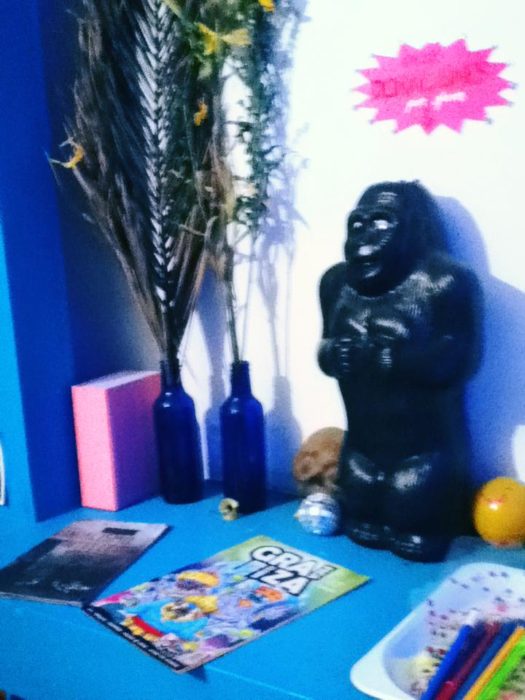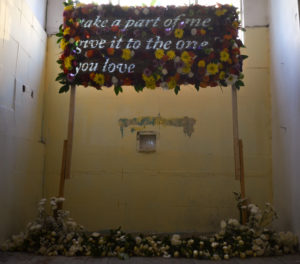The art scene in México City has a storied relationship with ‘alternatives,’ from artist-led/ run, to independent and non-profit art spaces. Well known artists from the city like Gabriel Orozco, Daniel Guzmán, Luis Felipe Ortega, Miguel Calderón and Yoshua Okón were all founders of alternative spaces in the 1990s and post-los grupos of the mid-1970s and 80s, with La Quiñonera, La Panadería, and Temistoclés 44. These alternative spaces have operated independently from government funding, institutional bureaucracy, and the academicization conventional to the museum. There was, and still is, a clear urgency to expand the bubble. Now afforded by networked technology and social media, there can be a more liquid exchange between alternative spaces and their publics, elevating the level of globalized discourse, and extending the outreach from the physical to the digital realm.

If anything, art institutions and galleries are more interested in visibility — elevating the individuality of the ‘brand name,’ ‘internationally recognized’ or ‘trending’ Mexican artists — rather than activating the art and its ecosystem to construct and enhance the nation’s social fabric. Of course, both public and private institutions dictate and allocate resources as a means to catalyze the creative industry, giving little freedom in return to its artists. There will never be a complete rupture from the mainstream, as cultural producers are uncontrollable variables fluidly merging between the seemingly polarized spheres. But alternative spaces born independently of these establishments provide places of creativity and experimentation with fewer resources, but ultimately, more freedom. As their conception binds them, they share a sense of collaboration and friendship, supporting each other with an aim to create other communities.

In 2014, artist Tamara Ibarra founded YEI, a website and platform developed to promote artist-run spaces, which has since developed into a network of more than 500 members. If anything, YEI has become a fanpage that shares an independent agenda, activates an archive and notifies followers about related content, exhibitions and news. Knowing what is going on is as simple as clicking ‘like,’ playing into the Facebook algorithm, and devoutly following YEI as the sole organiser of your social calendar.
Ibarra figures that the main difference between the alternative initiatives of today versus yesteryear are in their dynamics, “the social networks make it easier for us all to meet and work faster,” she says via email, “the generation of the 90s compared to now, is that we collaborate a lot these days, there is a lot of dialogue, maybe too much and that annoys many people who were expecting a rupture.” Below is a selection of independent spaces and organisations running right now in Mexico City, both and off the YEI map:

Pandeo in Napoles is a multiform art space developed as a think-tank to reform the social function inherent in public art spaces. Since 2014, this living house has hosted an extensive array of art expressions, creators, performers, thinkers, and researchers. They issue open calls for events, support independent projects in all fields and focus on mixture of urban living with local interest, while providing space most conducive for knowledge exchange. Pandeo fosters encounters, focusing on the interpersonal and affective interaction between the arts, the audience and the creators with an open door policy.
Biquini Wax is arguably the most recognized collective/art space of the bunch, and just a fifteen minute walk from Pandeo. It operates as an artist colony of sorts, where the members (now numbering 11 in total) live, work, and exhibit in a two-story complex, where one enters through a semi-demolished brick wall to access the showrooms. As a collective, they are politically motivated, often attempt to satirize mainstream culture in their roster of exhibiting artists.

Right down the block in the La Buenos Aires automotive district is LADRÓNgalería, recently highlighted by AQNB in an interview with artist and co-founder Marek Wolyfred. A definite plus is the cross-pollination and promotion of and between these two spaces, located within walking distance of each other.
Cráter Invertido isn’t located on the YEI map, but gets a special shout-out as a project that seeks creative self-reflection. Undefined by a common conception, they prioritize art as a strategy for social bonding. Cráter Invertido was formed by 14 artists who aim to tackle social and political issues, with art and activism. They also run <<The Lab Program>>, a residency that acts as an expanded testing room welcoming anyone questioning their disciplinary practice, and anyone willing to extend their inquiries, methodologies, and showcasing strategies. They invite candidates to take creative risks by renegotiating genuine curiosity as the main cog in expediting critical thinking.

After about 10 more minutes of walking, you reach Obrera Centro, a self-managed space by artists for artists in the aim of ‘deprofessionalizing,’ in the hopes of stimulating more fruitful and fertile collaborations. Their space has a unique set up, with a large kitchen in an industrialized warehouse working as the main hub of activity, which includes visual arts, music, design, theater, education, cinema and gastronomy. One example of interdisciplinary programming, is a project called Herrateca, a library of tools donated from community members, to be used by those who similarly donate in return.
Founded in 2010, ATEA is the final stop on the YEI walking tour.. It’s a space that promotes the creative reinvention of common imaginaries within urban space, located in one of the oldest and notorious neighbourhoods in México City. ATEA looks to detonate existing production processes and to question the roles of modern consumption through promotion, development and implementation of everything from exhibitions, to residencies, workshops, artistic and architectural research endeavors. The buzzword of the organisation, and perhaps all the spaces mentioned here, seems to be ‘self.’ For ATEA, it’s about generating, on its own terms and with its own rules, a system of autodidacticism to build a brighter future.

BONUS: Impronta Casa Editorial
Although five-hours drive out of México City, Impronta Casa Editorial deserves a special mention. It’s an editorial space, founded in 2014, as a return to the art of book-making that has been cast aside with the immediacy of mass manufacturing, distribution, and publication inherent to the digital sphere. For this collective, the book is an object of esteemed quality, bound to a sensory experience and enforced by the implication to read. The proposal of the publisher is, as its name states, to inhabit a house in Guadalajara, that hosts the publishing work, activates a workshop and museum, offers specialized design and printing services, and teaches seemingly lost typographical and graphic craft workshops. **














